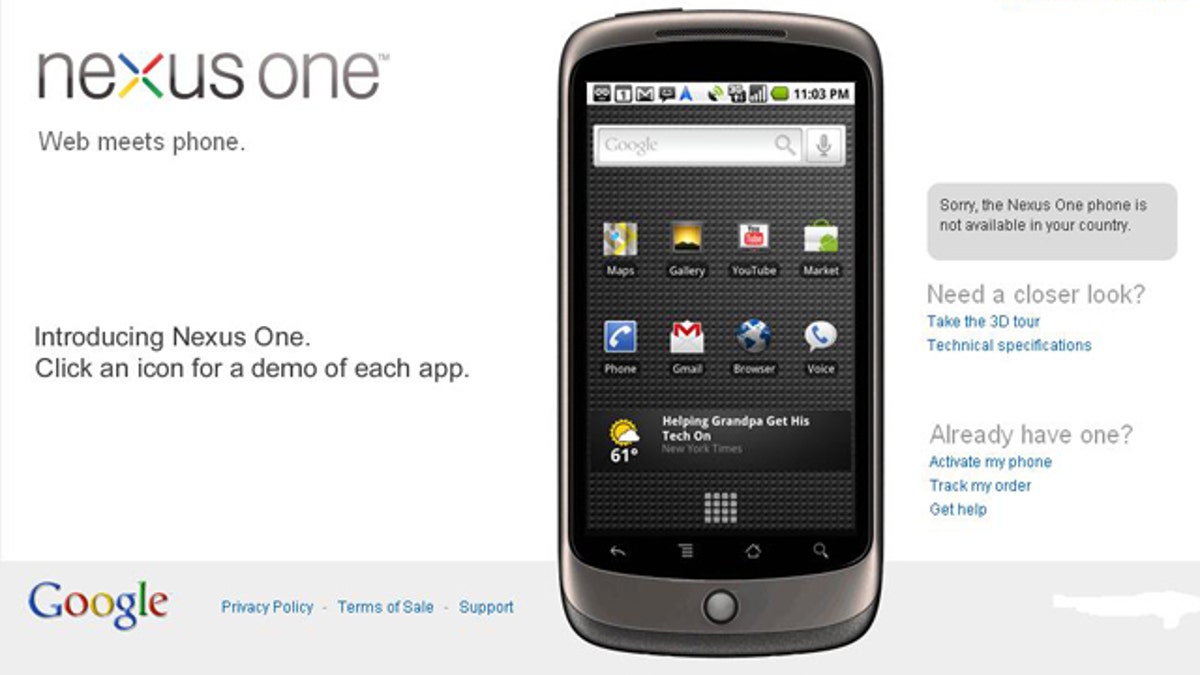
(Google.com)
In an effort to shake up the mobile phone market, Google has unveiled the Nexus One, the latest smart phone running the company's Android operating system. Yet questions about Google's larger goals remain, notably in the advertising world.
"The Nexus One belongs in an emerging category of device we call super phones," said Mario Queiroz, vice president of product management for Google. It is the first phone in a series of devices for the search giant from various manufacturers and carriers, all of which will be sold in a newly announced Google store: www.google.com/phone.
Yet despite the hype, the Nexus One is hardly as ground-breaking as the iPhone. Apple's entry in turned the the cell phone market on its ear, highlighting how intuitive and visually dynamic a cell phone can be. Apple later announced the App Store, transforming the cell phone from a communication device into a do-everything portable computer.
SLIDESHOW: The Google Nexus One
The Google Android platform that runs the Nexus One is similar to the iPhone's operating system; with downloadable applications and a lush visual interface, it's far more than just a phone. But aside from a few neat features, the Nexus One breaks little ground.
The phone can be purchased today with service from T-Mobile at $179, or without service for $529. The company plans to add more countries as well as devices from more manufacturers and providers, in the next few weeks, including Verizon Wireless and Vodaphone.
Many analysts cite Google's purchase of mobile advertising firm AdMob as evidence that the company intends to further its position in the nascent mobile advertising market, however. They argue that Google-branded phones may allow the company to more closely control advertisements to users.
The phone highlights the Android 2.1 operating system (which carried the cute code-name "Éclair") that first shipped on the Verizon Droid, meaning this new phone incorporates all the same functionality as that device. Android features multitasking, letting applications run in the background, unlike the iPhone's one-app-at-a-time behavior.
Google explained that the Nexus One is designed to showcase the software the company has been working on for Android, as well as the many widgets that run on the Droid platform. For example, a live wallpaper function enables interactive, moving images as the background wallpaper for the screen.
In addition, the ability to group photos on the phone by category highlights the company's strengths in searching, organizing and displaying an individual's content.
The phone was designed through very close partnership with HTC, which has shipped seven android products so far, including the Dream, the Magic, and the Hero, since the T-Mobile G1 came out a year ago.
The Nexus One's hardware specifications are impressive: It sports a 3.7-inch OLED color screen, for one thing. OLED displays have great contrast leading to extra deep blacks, and in theory, draw less power than standard standard LCDs because they don't require special backlighting.
It also has a fast 1-GHz Qualcomm Snapdragon Processor, and the version 2.1 of the Android operating system. Plus it's just 11.5 millimeters thin — that's no thicker than a #2 pencil — and at 130 grams, it's no heavier than a Swiss Army Knife.
A multicolor LED lies beneath the trackball at the bottom of the phone, which acts as a notifier for incoming calls and text and e-mail messages. And a five megapixel camera with LED flash takes high resolution pictures and video.
Light and proximity sensors add power saving functionality (Google dims the display based on ambient lighting or proximity to the skull). And there's active noise cancellation through two separate noise sensors, which eliminates background noise when walking down the street.
Google cites innovation around the voice experience as well. The "search by voice" app lets you speak a query rather than typing it. Saying "navigate to Ikea" executes a Google search for the term and automatically returns a map with turn-by-turn navigation to the nearest store. The Nexus One builds this level of voice-connection to other apps: Speech-to-text integration in e-mails is a welcome feature.
A yet-unreleased Google Earth for Android app has promise as well.
